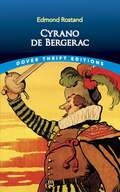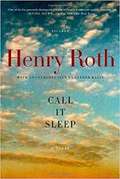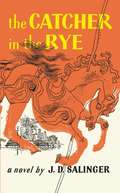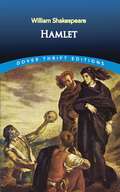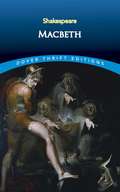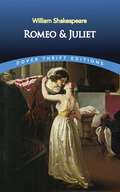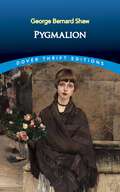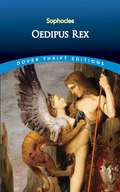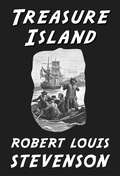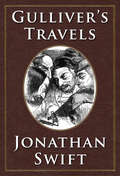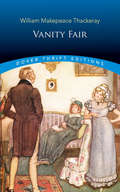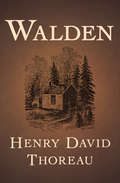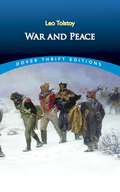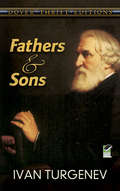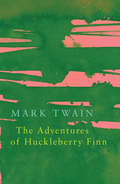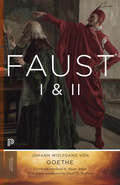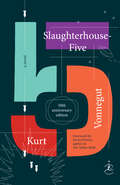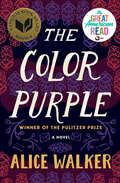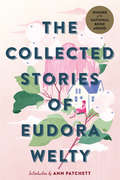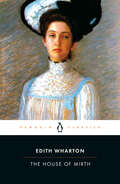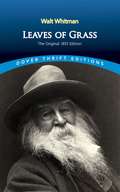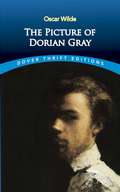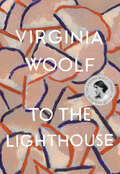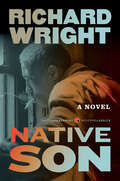Special Collections
College Board's 100 Books for College-Bound Readers
- Table View
- List View
Cyrano de Bergerac
by Edmond RostandWidely considered the most popular modern French play, Cyrano de Bergerac has dazzled audiences with its wit and eloquence since it premiered in 1897.
Cyrano, a quarrelsome, hot-tempered swordsman, as famous for his dueling skills and pugnacity as for his inordinately long nose, is hopelessly enamored of the beautiful Roxane.
She, in turn, is in love with Christian, a handsome but inarticulate and slow-witted suitor.
Asked for help by Christian in wooing Roxane, Cyrano pours out his heart in romantic dialogues -- delivered under cover of night and dense foliage -- and through ardent love letters written in the name of Christian.
Presented here in a rich blank verse translation by poet Louis Untermeyer, this beloved romantic comedy will be warmly received by theater buffs as well as students and teachers of drama and literature.
Call It Sleep
by Henry RothA sensitive boy's growing up is one strand in a complex web of his parent's tense life, their immigrant strangeness in a new land.
The Catcher in the Rye
by J. D. SalingerThe hero-narrator of THE CATCHER IN THE RYE is an ancient child of sixteen, a native New Yorker named Holden Caulfield. Through circumstances that tend to preclude adult, secondhand description, he leaves his prep school in Pennsylvania and goes underground in New York City for three days.
The boy himself is at once too simple and too complex for us to make any final comment about him or his story. Perhaps the safest thing we can say about Holden is that he was born in the world not just strongly attracted to beauty but, almost, hopelessly impaled on it.
There are many voices in this novel: children's voices, adult voices, underground voices--but Holden's voice is the most eloquent of all. Transcending his own vernacular, yet remaining marvelously faithful to it, he issues a perfectly articulated cry of mixed pain and pleasure. However, like most lovers and clowns and poets of the higher orders, he keeps most of the pain to, and for, himself. The pleasure he gives away, or sets aside, with all his heart. It is there for the reader who can handle it to keep.
Hamlet
by William ShakespeareIn this quintessential Shakespeare tragedy, a young prince's halting pursuit of revenge for the murder of his father unfolds in a series of highly charged confrontations that have held audiences spellbound for nearly four centuries.
Those fateful exchanges, and the anguished soliloquies that precede and follow them, probe depths of human feeling rarely sounded in any art.
The title role of Hamlet, perhaps the most demanding in all of Western drama, has provided generations of leading actors their greatest challenge.
Yet all the roles in this towering drama are superbly delineated, and each of the key scenes offers actors a rare opportunity to create theatrical magic.
As if further evidence of Shakespeare's genius were needed, Hamlet is a unique pleasure to read as well as to see and hear performed.
The full text of this extraordinary drama is reprinted here from an authoritative British edition complete with illuminating footnotes.
A selection of the Common Core State Standards Initiative.
Macbeth
by William ShakespeareOne of the great Shakespearean tragedies, Macbeth is a dark and bloody drama of ambition, murder, guilt, and revenge.
Prompted by the prophecies of three mysterious witches and goaded by his ambitious wife, the Scottish thane Macbeth murders Duncan, King of Scotland, in order to succeed him on the throne.
This foul deed soon entangles the conscience-stricken nobleman in a web of treachery, deceit, and more murders, which ultimately spells his doom.
Set amid the gloomy castles and lonely heaths of medieval Scotland, Macbeth paints a striking dramatic portrait of a man of honor and integrity destroyed by a fatal character flaw and the tortures of a guilty imagination.
A selection of the Common Core State Standards Initiative.
Romeo and Juliet
by William ShakespeareOne of Shakespeare's most popular and accessible plays, Romeo and Juliet tells the story of two star-crossed lovers and the unhappy fate that befell them as a result of a long and bitter feud between their families.
The play contains some of Shakespeare's most beautiful and lyrical love poetry and is perhaps the finest celebration of the joys of young love ever written.
This inexpensive edition includes the complete, unabridged text with explanatory footnotes.Ideal for classroom use, it is a wonderful addition to the home library of anyone wanting to savor one of literature's most sublime paeans to love.
Pygmalion
by George Bernard ShawOne of George Bernard Shaw's best-known plays, Pygmalion was a rousing success on the London and New York stages, an entertaining motion picture and a great hit with its musical version, My Fair Lady.
An updated and considerably revised version of the ancient Greek legend of Pygmalion and Galatea, the 20th-century story pokes fun at the antiquated British class system.
In Shaw's clever adaptation, Professor Henry Higgins, a linguistic expert, takes on a bet that he can transform an awkward cockney flower seller into a refined young lady simply by polishing her manners and changing the way she speaks.
In the process of convincing society that his creation is a mysterious royal figure, the Professor also falls in love with his elegant handiwork.
The irresistible theme of the emerging butterfly, together with Shaw's brilliant dialogue and splendid skills as a playwright, have made Pygmalion one of the most popular comedies in the English language.
A staple of college drama courses, it is still widely performed.
Oedipus Rex
by SophoclesConsidered by many the greatest of the classic Greek tragedies, Oedipus Rex is Sophocles' finest play and a work of extraordinary power and resonance.
Aristotle considered it a masterpiece of dramatic construction and refers to it frequently in the Poetics.
In presenting the story of King Oedipus and the tragedy that ensues when he discovers he has inadvertently killed his father and married his mother, the play exhibits near-perfect harmony of character and action.
Moreover, the masterly use of dramatic irony greatly intensifies the impact of the agonizing events and emotions experienced by Oedipus and the other characters in the play.
Now these and many other facets of this towering tragedy may be studied and appreciated in Dover's attractive inexpensive edition of one of the great landmarks of Western drama.
A selection of the Common Core State Standards Initiative.
Antigone
by Paul Woodruff SophoclesWoodruff's work with Peter Meineck makes this text one that is accessible to today's students and could be staged for modern audiences. Line notes printed at the bottom of the page bring a reader further quick assistance. . . .
The choral odes as rendered here deserve special notice. After giving a succinct analysis of each in his introduction, Woodruff translates the lyrics into English that is both poetic and comprehensible. . . .
Woodruff's rendering of the dialogue moves along easily; these are lines that any contemporary Antigone, Creon or Haemon might speak. Antigone's words on the gods' unwritten laws keep close to the Greek and yet would be authentic for a modern speaker. . . .
Woodruff's introduction is a strong, clear, and clever blend of basic traditional information (to those who know Greek tragedy) and fresh insights. . . .
Treasure Island
by Robert Louis StevensonYoung Jim Hawkins, while running the Benbow Inn with his mother, comes into possession of a treasure map left by the unfortunate Captain Billy Bones.
So begins a journey that will take Jim and a rowdy band of buccaneers to Treasure Island.
Robert Louis Stevenson's classic adventure was published in 1883 and exerted an enormous influence on the popular perceptions of pirates, including such elements as treasure maps marked with an "X", schooners, the Black Spot, tropical islands, and one-legged seamen bearing parrots on their shoulders.
Gulliver's Travels
by Jonathan SwiftSatirist Jonathan Swift's best known work is the prose satire, Gulliver's Travels, first published in 1726.
It is both a satire on human nature and the "travellers' tales" literary subgenre.
It tells the story of Lemuel Gulliver and his fantastic journeys.
A series of seafaring misadventures take Gulliver to a variety of imagined lands, where he meets the tiny Lilliputians, the enormous Brobdingnagians and many other curious peoples.
He is embroiled in political intrigue everywhere he goes, all of which is Swift's comic allegory for religious, political and social events of the day in Europe.
Never out of print since its first publication, Gulliver's Travels continues to delight readers today.
Swift himself claimed that he wrote Gulliver's Travels "to vex the world rather than divert it".
Vanity Fair
by William Makepeace ThackeraySubtitled "a novel without a hero," Vanity Fair offers an acidly satirical romp across all levels of English society during the Napoleonic wars.
William Thackeray focuses on how the war affects people other than soldiers, the typical heroes.
All of his characters are deeply flawed, from social climber Becky Sharp and sweet Amelia Sedley to caddish George Osborne and loyal William Dobbin.
Becky, liar and hypocrite, takes center stage as one of literature's great female protagonists.
Penniless, armed with only her beauty, charm, and cunning, she claws her way forward by practicing the corrupt principles of her world.
Becky seduces her enemies and betrays friends with a charismatic energy that has captivated generations of readers.
Regarded as Thackeray's best novel and masterpiece, Vanity Fair was published in serial form in 1847-48 in Punch and established the author's literary reputation as well as his social status and financial security.
Critic A. E. Dyson acclaimed it as "one of the world's most devious novels, devious in its characterization, its irony, its explicit moralizing, its exuberance, its tone.
Few novels demand more continuing alertness from the reader, or offer more intellectual and moral stimulation in return."
Walden
by Henry David ThoreauAn American masterwork in praise of nature, self-reliance, and the simple lifeI went to the woods because I wished to live deliberately, to front only the essential facts of life, and see if I could not learn what it had to teach, and not, when I came to die, discover that I had not lived.
In 1845, the transcendentalist Henry David Thoreau moved from his home in the town of Concord, Massachusetts, to a small cabin he built by hand on the shores of Walden Pond.
He spent the next two years alone in the woods, learning to live self-sufficiently and to take his creative and moral inspiration from nature. P
art memoir, part philosophical treatise, part environmental manifesto, Walden is Thoreau's inspirational account of those extraordinary years and one of the most influential books ever written.
War and Peace
by Leo TolstoyHailed as one of the greatest novels of all time and a classic of world literature, War and Peace unfolds in the early nineteenth century during the turbulent years of the Napoleonic invasion of Russia.
Tolstoy's epic ranges from stirring depictions of historical events to intimate portraits of family life, moving between public spectacles and private lives to offer a tale of both panoramic scope and closely observed detail.
From the breathless excitement of 16-year-old Natasha Rostov's first ball, to Prince Andrei Bolkonsky's epiphany on the battlefield at Austerlitz, the novel abounds in memorable incidents, particularly those involving Pierre Bezukhov.
A seeker after moral and spiritual truths, Pierre and his search for life's deeper meaning stand at the heart of this monumental book.
A tale of strivers in a world fraught with conflict, social and political change, and spiritual confusion, Tolstoy's magnificent work continues to entertain, enlighten, and inspire readers around the world.
Fathers and Sons
by Ivan TurgenevConsidered one of Ivan Turgenev's finest works, Fathers and Sons was the first of the great nineteenth-century Russian novels to achieve international renown.
A stirring tale of generational conflict during a period of social revolution, it vividly depicts the friction between liberal and conservative thought and the rise of the radical new philosophy of nihilism. Set in Russia during the 1860s against the backdrop of the liberation of the serfs, the story concerns the clash of older aristocrats with the new democratic intelligentsia.
The impressionable young student Arkady Kirsanoff arrives home in the company of his friend Bazarov, a cynical biologist. Arkady's father and uncle, already distressed by the upheaval of the peasants, grow increasingly irritated at Bazarov's outspoken nihilism and his ridicule of the conventions of state, church, and home. The young friends, bored by the rustic life of the Kirsanoff estate, venture off to the provincial capital in search of amusement. There they encounter both romance and alienation.
The Adventures of Huckleberry Finn
by Mark TwainTo escape from his abusive father, 13-year-old Huckleberry Finn fakes his own death and floats away on a raft down the Mississippi with Jim, a runaway slave.
In a series of unforgettable adventures narrated by Huck, they encounter a cross-section of characters from slave-hunters, thieves and conmen to feuding aristocrats and even some relatives of Tom Sawyer.
It is still considered by some as one of the great American novels of all-time.
Faust I & II, Volume 2
by Johann Wolfgang von GoetheOne of the great classics of European literature, Faust is Goethe's most complex and profound work. To tell the dramatic and tragic story of one man’s pact with the Devil in exchange for knowledge and power, Goethe drew from an immense variety of cultural and historical material, and a wealth of poetic and theatrical traditions. What results is a tour de force illustrating Goethe’s own moral and artistic development, and a symbolic, cautionary tale of Western humanity striving restlessly and ruthlessly for progress.Capturing the sense, poetic variety, and tonal range of the German original in present-day English, Stuart Atkins’s translation presents the formal and rhythmic dexterity of Faust in all its richness and beauty, without recourse to archaisms or interpretive elaborations.Featuring a new introduction by David Wellbery, this Princeton Classics edition of Faust is the definitive English version of a timeless masterpiece.
Slaughterhouse Five or the Children’s Crusade
by Kurt Vonnegut Jr.Slaughterhouse-Five, an American classic, is one of the world's great anti-war books.
Centering on the infamous firebombing of Dresden, Billy Pilgrim's odyssey through time reflects the mythic journey of our own fractured lives as we search for meaning in what we fear most.
The Color Purple
by Alice WalkerThe Pulitzer Prize– and National Book Award–winning novel is now a new, boldly reimagined film from producers Oprah Winfrey and Steven Spielberg, starring Taraji P. Henson, Danielle Brooks, and Fantasia Barrino.A PBS Great American Read Top 100 Pick Celie has grown up poor in rural Georgia, despised by the society around her and abused by her own family. She strives to protect her sister, Nettie, from a similar fate, and while Nettie escapes to a new life as a missionary in Africa, Celie is left behind without her best friend and confidante, married off to an older suitor, and sentenced to a life alone with a harsh and brutal husband. In an attempt to transcend a life that often seems too much to bear, Celie begins writing letters directly to God. The letters, spanning 20 years, record a journey of self-discovery and empowerment guided by the light of a few strong women. She meets Shug Avery, her husband&’s mistress and a jazz singer with a zest for life, and her stepson&’s wife, Sofia, who challenges her to fight for independence. And though the many letters from Celie&’s sister are hidden by her husband, Nettie&’s unwavering support will prove to be the most breathtaking of all.The Color Purple has sold more than five million copies, inspired an Academy Award-nominated film starring Oprah Winfrey and directed by Steven Spielberg, and been adapted into a Tony-winning Broadway musical. Lauded as a literary masterpiece, this is the groundbreaking novel that placed Walker &“in the company of Faulkner&” (The Nation), and remains a wrenching—yet intensely uplifting—experience for new generations of readers.This ebook features a new introduction written by the author on the 25th anniversary of publication, and an illustrated biography of Alice Walker including rare photos from the author&’s personal collection. The Color Purple is the 1st book in the Color Purple Collection, which also includes The Temple of My Familiar and Possessing the Secret of Joy.
The Collected Stories of Eudora Welty
by Eudora WeltyThis complete collection includes all the published stories of Eudora Welty.
There are forty-one stories in all, including the earlier collections A Curtain of Green, The Wide Net, The Golden Apples, and The Bride of the Innisfallen, as well as previously uncollected stories.
With a Preface written by the Author especially for this edition.
The House of Mirth
by Edith WhartonAn immensely popular bestseller upon its publication in 1905, The House of Mirth was Edith Wharton’s first great novel. Set among the elegant brownstones of New York City and opulent country houses like gracious Bellomont on the Hudson, the novel creates a satiric portrayal of what Wharton herself called “a society of irresponsible pleasure-seekers” with a precision comparable to that of Proust. And her brilliant and complex characterization of the doomed Lily Bart, whose stunning beauty and dependence on marriage for economic survival reduce her to a decorative object, becomes an incisive commentary on the nature and status of women in that society. From her tragic attraction to bachelor lawyer Lawrence Selden to her desperate relationship with social-climbing Rosedale, Lily is all too much a product of the world indicated by the title, a phrase taken from Ecclesiastes: “The heart of fools is in the house of mirth.” For it is Lily’s very specialness that threatens the elegance and fulfillment she seeks in life. Along with the author’s other masterpiece, The Age of Innocence, this novel claims a place among the finest American novels of manners.
Leaves of Grass
by Walt WhitmanIn 1855, Walt Whitman published — at his own expense — the first edition of Leaves of Grass, a visionary volume of twelve poems. Showing the influence of a uniquely American form of mysticism known as Transcendentalism, which eschewed the general society and culture of the time, the writing is distinguished by an explosively innovative free verse style and previously unmentionable subject matter. Exalting nature, celebrating the human body, and praising the senses and sexual love, the monumental work was condemned as "immoral." Whitman continued evolving Leaves of Grass despite the controversy, growing his influential work decades after its first appearance by adding new poems with each new printing. This edition presents the original twelve poems from Whitman's premier 1855 publication of Leaves of Grass. Included are some of the greatest poems of modern times: "Song of Myself," "I Sing the Body Electric," and "There Was a Child Went Forth" (which in the first editions of Leaves of Grass were still nameless), works that continue to upset conventional notions of beauty and originality even today.
The Picture of Dorian Gray
by Oscar WildeIn this celebrated work, his only novel, Wilde forged a devastating portrait of the effects of evil and debauchery on a young aesthete in late-19th-century England.
Combining elements of the Gothic horror novel and decadent French fiction, the book centers on a striking premise: As Dorian Gray sinks into a life of crime and gross sensuality, his body retains perfect youth and vigor while his recently painted portrait grows day by day into a hideous record of evil, which he must keep hidden from the world.
For over a century, this mesmerizing tale of horror and suspense has enjoyed wide popularity.
It ranks as one of Wilde's most important creations and among the classic achievements of its kind.
To the Lighthouse
by Virginia WoolfThe subject of this extraordinary novel is the daily life of an English family in the Hebrides.
Native Son
by Richard WrightRight from the start, Bigger Thomas had been headed for jail. It could have been for assault or petty larceny; by chance, it was for murder and rape.
Native Son tells the story of this young black man caught in a downward spiral after he kills a young white woman in a brief moment of panic.
Set in Chicago in the 1930s, Wright's powerful novel is an unsparing reflection on the poverty and feelings of hopelessness experienced by people in inner cities across the country and of what it means to be black in America.
